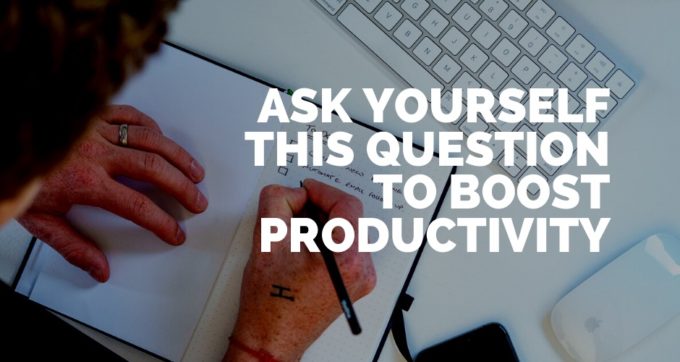I love simple productivity tricks; quick and easy things you can do to be more productive and organised.
In this post, I’d like to share the one question I ask myself to be more productive. This is a question I subconsciously ask myself dozens of times a day. This question helps me to identify what I need to work on next. It keeps me track and on time and helps me to avoid ever dropping the ball on a project.
The question is:
What is my next action?
Don't want to read this post? Listen to the podcast instead:
I was first exposed to this idea when I read David Allen’s Getting Things Done (book summary). According to David Allen, the next action is the most immediate activity that’s required to move a task or project forward.
Later, when I started working with Pipedrive while I was working in mortgages, I noticed how the CRM always prompts you to create an activity (i.e. an action) on an open deal. And to this day, I’ve made sure that every deal I’m working on has some kind of ‘next action’ identified, even if that just means following up with someone.
When asking this question, it’s important to be specific and identify the very next thing you need to do, no matter how small. For example, if you’re working on a project and a decision needs to be made, the next action isn’t actually to make a decision. The next action could be sending an email or booking a meeting with the necessary stakeholders who are involved in the decision.
You can ask yourself this question in relation to just about anything you’re working on. I use it in sales to identify what I need to do next when following up with a lead. I use it during the projects I’m working on to identify what I need to do next to make progress. I use it with the clients I’m working with to ensure we all know what needs to be done next.
Identifying the next action on a given task or project has many benefits:
- The next action helps you identify the very next thing you need to do. Going back to the example above, as you can see, the next actions are often very small and easy to complete tasks. e.g. sending an email, following up, booking a call.
- By identifying your next action, you’re less likely to procrastinate and avoid the work. Procrastination is often the result of not knowing what to do next. Identifying the next action, no matter how small, helps you move forward.
- Identifying the next action helps you to maintain momentum on a project. When you don’t know what the next action is, there’s a risk the project may stall as there’s no clear path forward.
You need to be asking this question, ‘What is the next action’ all the time. And the best time to ask the question is when you finish an action. When you finish a meeting, what’s the next action? When you complete a task, what’s the next action? When you send an email, what’s the next action? Even when you finish an entire project, what’s the next action?
In order to remember all your next actions, you need to have a good task management system. I use two tools for identifying my next actions; Pipedrive and Asana.
Pipedrive » Pipedrive is where I manage all my inbound leads and consulting inquiries. As mentioned above, I make sure that every deal I’m trying to close has an activity scheduled that reminds me of what I need to do next. Even if I’m waiting to hear back from a lead, the next action is to follow up with an email or phone call. This is one of the great things about this question; even if I’m waiting to hear back from someone, the next action helps forces me to think about what I can do to make progress.
Asana » Besides sales activities, all my day to day work and projects live in Asana. And every client or project I’m working on has a next action (i.e. a task or subtask) linked to it. I could be working with a few dozen clients at a time, so it’s important for me to identify what’s next for each client so I don't forget where we’re at or what needs to be done next.
Not every next action needs to be completed right away. In both of these systems, the next actions have due dates set up so I am reminded at the right time when I need to do the next action. Every day I simply open Asana/Pipedrive, look at my tasks, complete the next actions for the day and then create NEW next actions with due dates for the next thing I need to do. Following this simple process means that every open loop; every task, client or project, has a next action telling me what to do and when. I never need to remember anything and my tools do the reminding for me.
